Abstract
The effect of environmental storage relative humidity (RH) on the moisture content, viability, and moist heat and gaseous ethylene oxide (EO) resistance of biological indicators (BIs) was evaluated. No statistically significant difference was observed between the initial Bacillus stearothermophilus spore population and the spore population of BIs stored at 20 degrees C and 0, 20, 44, of 55% RH or under ambient, 4 degrees C, or -20 degrees C conditions after 12 months. A statistically significant decrease in moist heat resistance from initial starting levels was found for BIs stored at 20 degrees C and either 0 or 20% RH. There was a statistically significant decrease in the B. subtilis BI spore population, compared with initial levels, when the BIs were stored at 20 degrees C and 0% RH concomitant with a significant increase in their EO resistance. BI storage at 20 degrees C and 20 or 44% RH, or under ambient, 4 degrees C, or -20 degrees C conditions, had no significant effect on EO resistance. BIs stored at 20 degrees C and 66% RH demonstrated a significantly lower EO resistance compared with starting levels.
Full text
PDF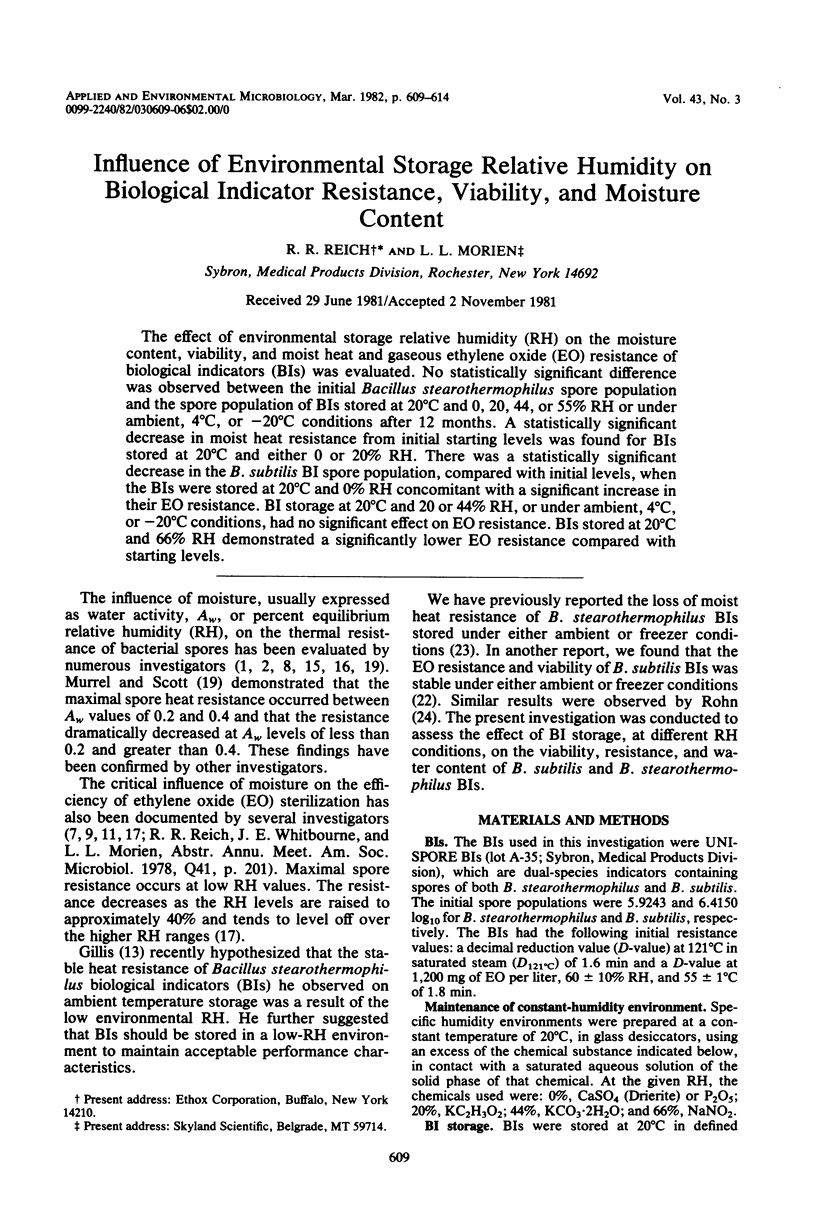
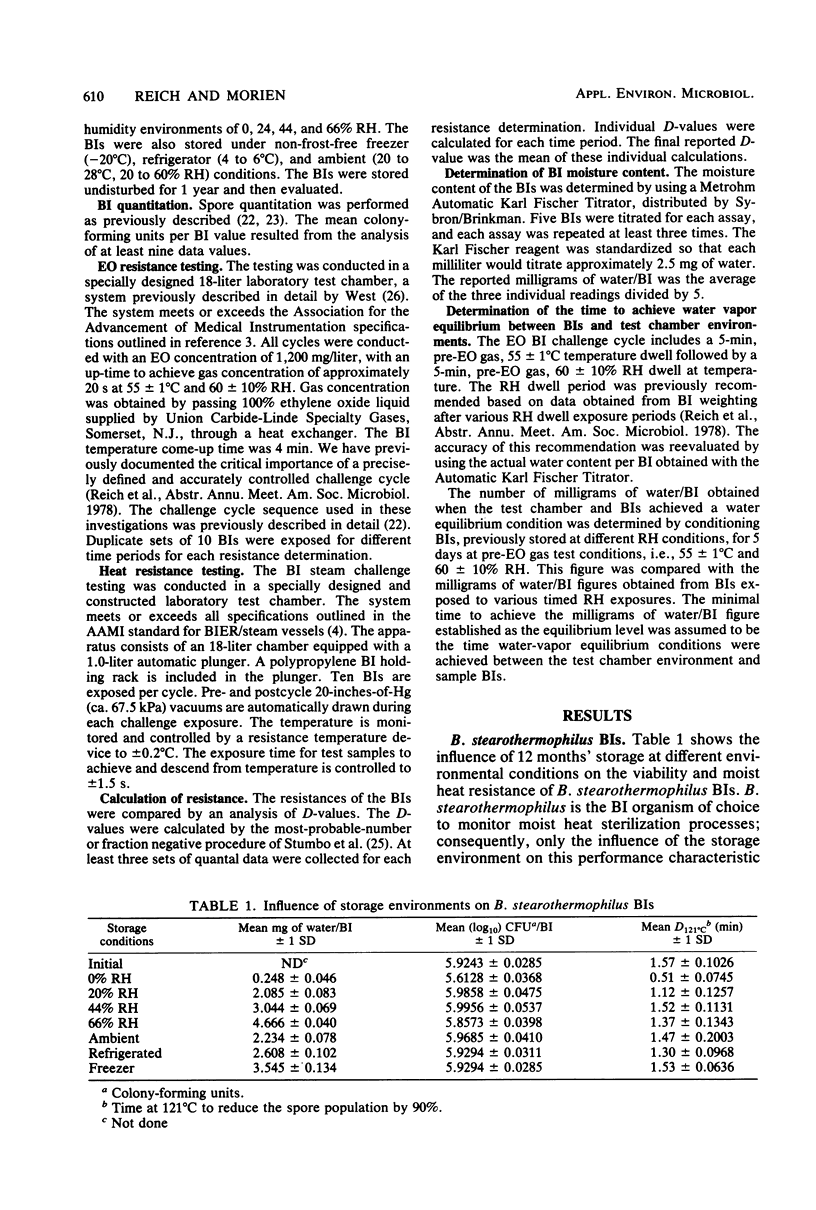
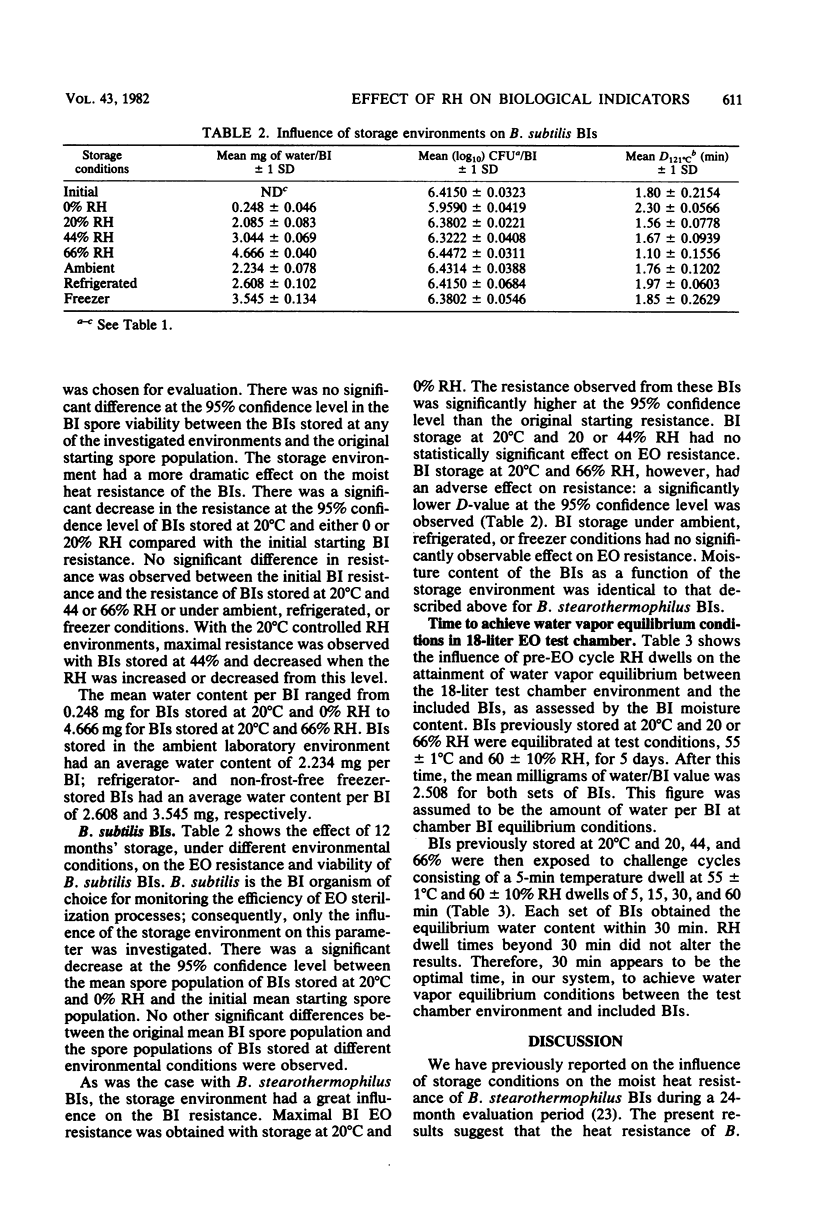
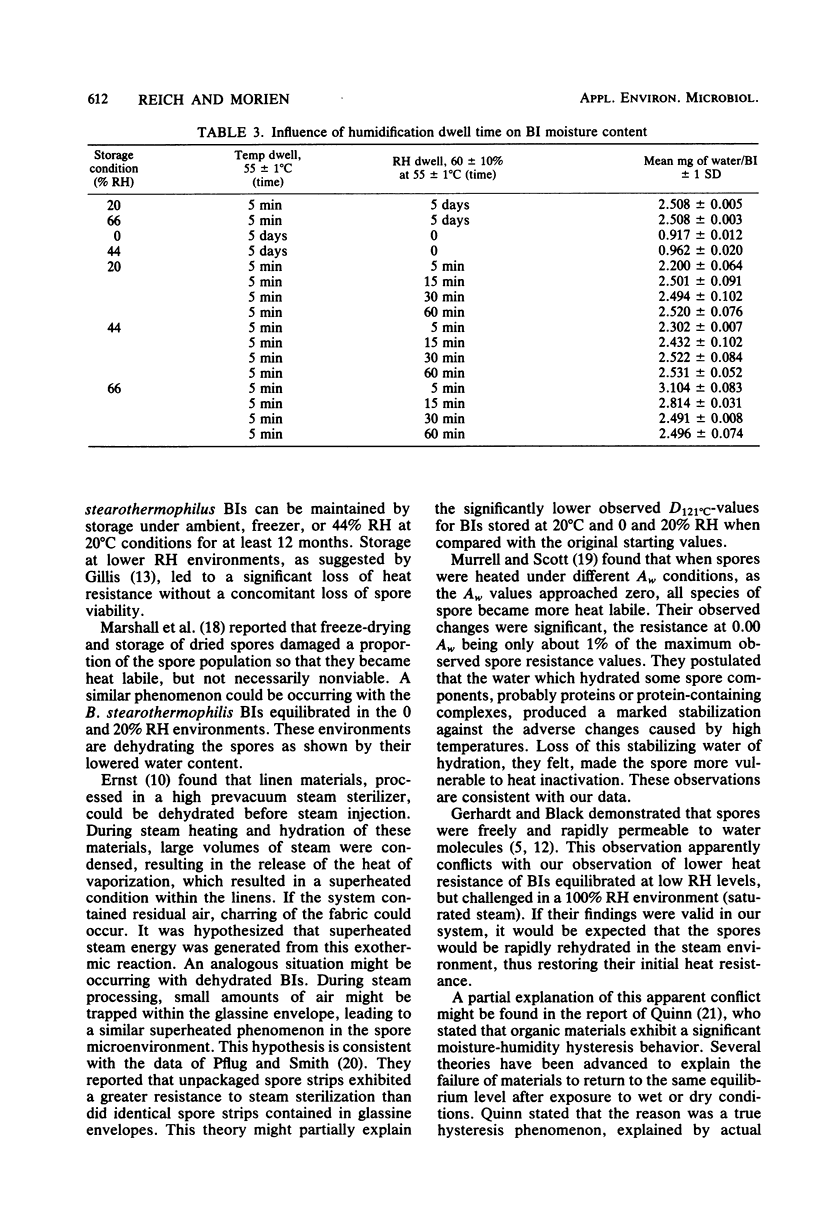
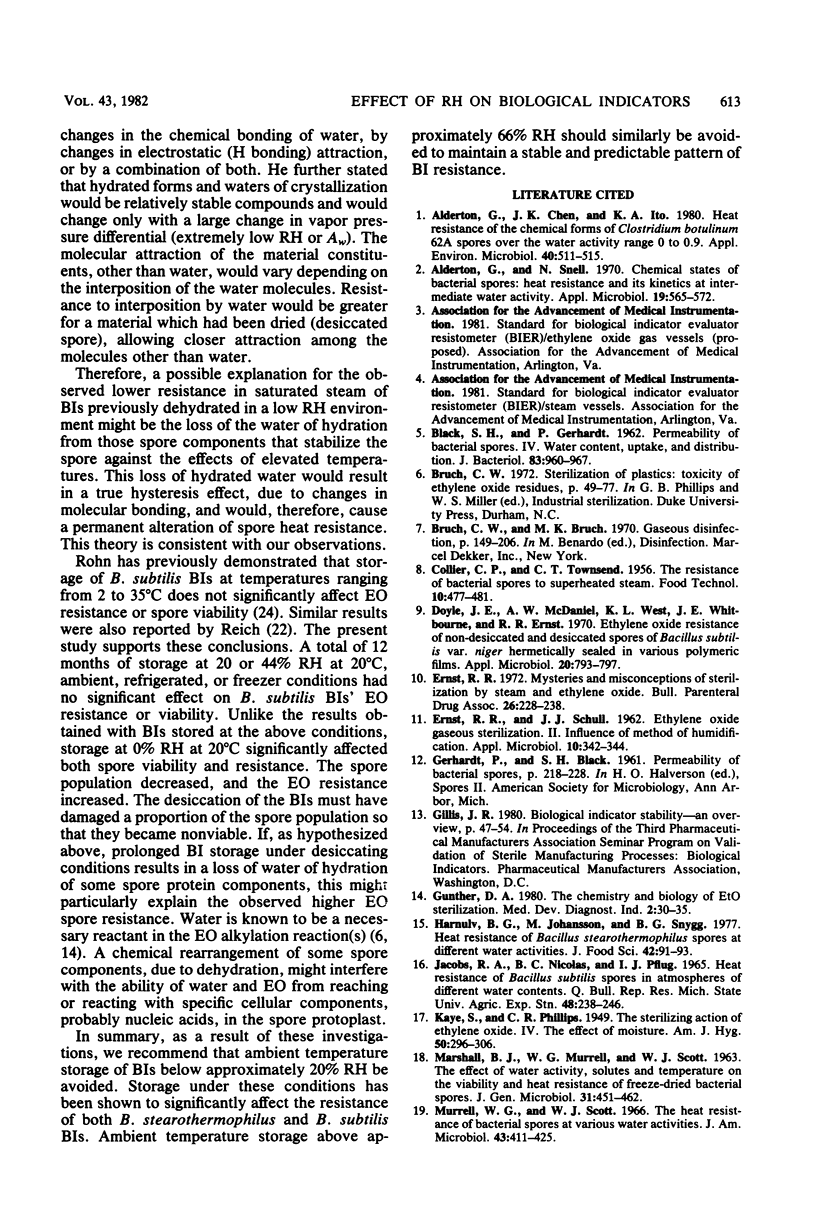

Selected References
These references are in PubMed. This may not be the complete list of references from this article.
- Alderton G., Chen J. K., Ito K. A. Heat resistance of the chemical resistance forms of Clostridium botulinum 62A spores over the water activity range 0 to 0.9. Appl Environ Microbiol. 1980 Sep;40(3):511–515. doi: 10.1128/aem.40.3.511-515.1980. [DOI] [PMC free article] [PubMed] [Google Scholar]
- Alderton G., Snell N. Chemical states of bacterial spores: heat resistance and its kinetics at intermediate water activity. Appl Microbiol. 1970 Apr;19(4):565–572. doi: 10.1128/am.19.4.565-572.1970. [DOI] [PMC free article] [PubMed] [Google Scholar]
- BLACK S. H., GERHARDT P. Permeability of bacterial spores. IV. Water content, uptake, and distribution. J Bacteriol. 1962 May;83:960–967. doi: 10.1128/jb.83.5.960-967.1962. [DOI] [PMC free article] [PubMed] [Google Scholar]
- Doyle J. E., McDaniel A. W., West K. L., Whitbourne J. E., Ernst R. R. Ethylene oxide resistance of nondesiccated and desiccated spores of Bacillus subtilis var. niger hermetically sealed in various polymeric films. Appl Microbiol. 1970 Nov;20(5):793–797. doi: 10.1128/am.20.5.793-797.1970. [DOI] [PMC free article] [PubMed] [Google Scholar]
- ERNST R. R., SHULL J. J. Ethylene oxide gaseous sterilization. II. Influence of method of humidification. Appl Microbiol. 1962 Jul;10:342–344. doi: 10.1128/am.10.4.342-344.1962. [DOI] [PMC free article] [PubMed] [Google Scholar]
- Ernst R. R. Mysteries and misconceptions of sterilization by steam and ethylene oxide. Bull Parenter Drug Assoc. 1972 Sep-Oct;26(5):228–238. [PubMed] [Google Scholar]
- KAYE S., PHILLIPS C. R. The sterilizing action of gaseous ethylene oxide; the effect of moisture. Am J Hyg. 1949 Nov;50(3):296–306. doi: 10.1093/oxfordjournals.aje.a119362. [DOI] [PubMed] [Google Scholar]
- Murrell W. G., Scott W. J. The heat resistance of bacterial spores at various water activities. J Gen Microbiol. 1966 Jun;43(3):411–425. doi: 10.1099/00221287-43-3-411. [DOI] [PubMed] [Google Scholar]
- Reich R. R. Storage stability of Bacillus subtilis ethylene oxide biological indicators. Appl Environ Microbiol. 1980 Jan;39(1):277–279. doi: 10.1128/aem.39.1.277-279.1980. [DOI] [PMC free article] [PubMed] [Google Scholar]


